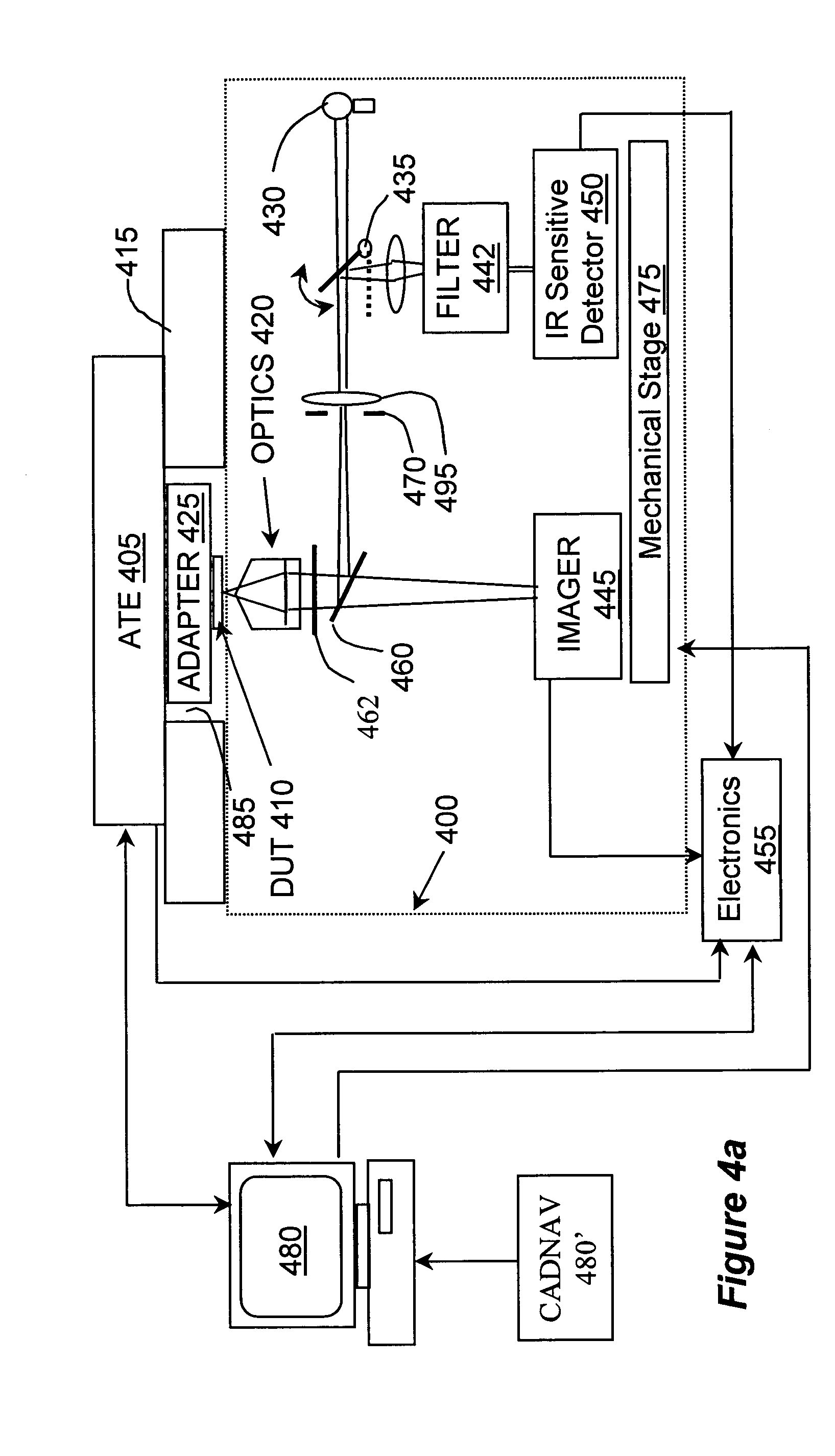Time resolved emission spectral analysis system
a technology of emission spectrum and analysis system, which is applied in the direction of optical radiation measurement, instruments, spectrometry/spectrophotometry/monochromators, etc., can solve the problems of light emission and failure of locating semiconductor devices, and achieve the effect of high spatial resolution and noise reduction
- Summary
- Abstract
- Description
- Claims
- Application Information
AI Technical Summary
Benefits of technology
Problems solved by technology
Method used
Image
Examples
Embodiment Construction
[0030] The present invention provides a testing and debug system particularly suitable for rise time, timing, logic fault localization, and other testing of microchips. The investigation is performed with respect to a time correlation to electrical stimulus provided to the DUT, and with respect to the wavelength of the light emitted from the DUT. FIG. 2 is a block diagram depicting the major components of the system according to an embodiment of the invention. The ATE 220 electrically stimulates the DUT 210, and also sends a sync signal to the controller 280. In response to the stimulus, DUT 210 provides optical emission, which is made to pass through a wavelength filter 240. Selected wavelengths pass through the filter 240 and are directed to detector 250. The signal from the detector 250 is sent to the controller 280. Consequently, the system provides temporal and spectral resolution of optical emission of the DUT.
[0031] By studying time-correlated emission at particular waveleng...
PUM
 Login to View More
Login to View More Abstract
Description
Claims
Application Information
 Login to View More
Login to View More - R&D
- Intellectual Property
- Life Sciences
- Materials
- Tech Scout
- Unparalleled Data Quality
- Higher Quality Content
- 60% Fewer Hallucinations
Browse by: Latest US Patents, China's latest patents, Technical Efficacy Thesaurus, Application Domain, Technology Topic, Popular Technical Reports.
© 2025 PatSnap. All rights reserved.Legal|Privacy policy|Modern Slavery Act Transparency Statement|Sitemap|About US| Contact US: help@patsnap.com



